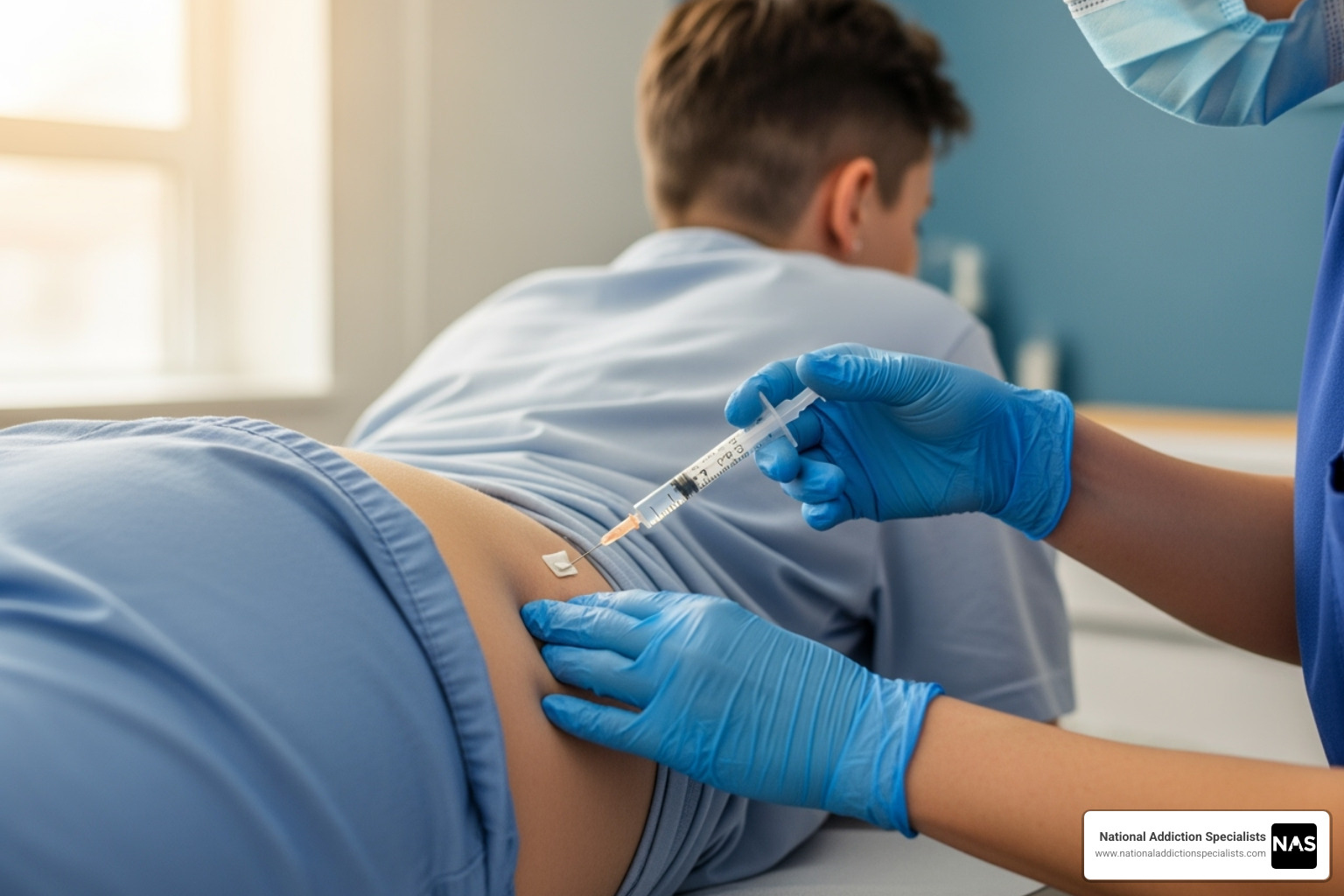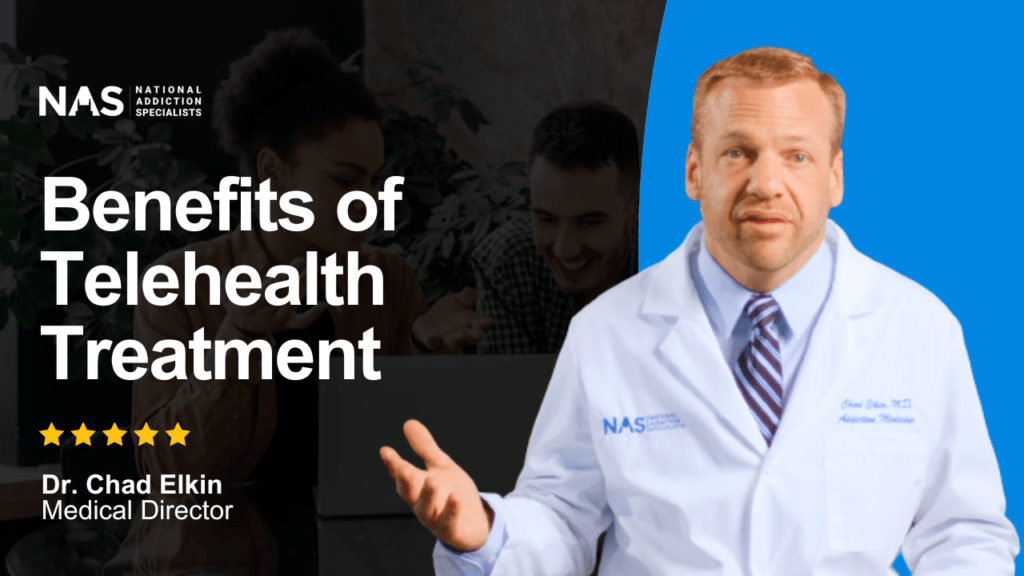Understanding Vivitrol: A Comprehensive Recovery Solution

Vivitrol is a prescription injectable medication that blocks the effects of opioids and reduces alcohol cravings for people in recovery. Here’s what you need to know:
Key Facts About Vivitrol:
- Active ingredient: Naltrexone (extended-release injection)
- Dosage: 380 mg administered once monthly
- Uses: Treats alcohol dependence and prevents opioid relapse
- Administration: Intramuscular injection by healthcare provider
- Status: Not a controlled substance, no abuse potential
- Requirements: Must be opioid-free for 7-14 days before starting
If you’re struggling with alcohol dependence or opioid dependence, it’s important to understand why quitting can be challenging. Vivitrol offers a unique approach as a medication-assisted treatment that works by blocking the euphoric effects of substances rather than replacing them.
Unlike daily medications, Vivitrol provides month-long protection through a single injection. This extended-release formulation helps eliminate the challenge of daily pill compliance while supporting your recovery journey. The medication must be used alongside counseling and other recovery programs to be most effective.
As Dr. Chad Elkin, founder and Medical Director of National Addiction Specialists, I’ve seen how Vivitrol can be a valuable tool in comprehensive addiction treatment plans. My experience in addiction medicine has shown that this non-addictive medication can provide crucial support for patients committed to recovery.

Vivitrol word guide:
- medication-assisted treatment
- benefits of medication assisted treatment
- how does medication assisted treatment work
How Vivitrol Works to Support Recovery
Vivitrol supports recovery by acting as an opioid antagonist. It binds to opioid receptors in the brain, effectively blocking them. This prevents opioids and alcohol from producing their usual euphoric effects, which is key to breaking the cycle of addiction.
For opioid dependence, Vivitrol stops you from feeling a “high” if you use opioids, reducing the incentive for relapse. For alcohol dependence, it blocks the release of endorphins caused by drinking, which diminishes the rewarding feeling and helps reduce cravings. A significant advantage of Vivitrol is that it is non-addictive and not a controlled substance. It’s a pure antagonist, meaning it doesn’t activate the receptors or create a high, so there is no potential for abuse. Understanding The Science Behind Opioid Addiction can clarify why this blocking mechanism is so effective.
Duration and Administration
One of the biggest advantages of Vivitrol is its convenience as a once-monthly shot. It’s an extended-release injection containing a 380 mg dose of naltrexone that works for about 28 days. This eliminates the need for daily pills and helps ensure consistent treatment.
The medication is administered by a healthcare provider as a deep intramuscular gluteal injection (a shot in the buttock muscle). This monthly schedule simplifies treatment, allowing you to focus on other aspects of your recovery, like counseling. Regular appointments also provide a chance to check in with your care team. You can learn more about how MAT works to see how Vivitrol fits into a complete recovery plan.

The Treatment Process: What to Expect with Vivitrol
Starting Vivitrol is a commitment to a comprehensive recovery plan. The medication is a powerful tool that blocks opioid effects and reduces alcohol cravings, but it works best when combined with counseling and other support systems. This integrated approach allows you to address the physical aspects of addiction while focusing on the psychological and emotional work of healing. By removing the daily struggle with cravings, Vivitrol creates the space needed to rebuild your life.
Our Beginner’s Guide to Medication-Assisted Treatment can help you understand how Vivitrol fits into a larger recovery strategy.
Who is a Candidate for Vivitrol Treatment?
Vivitrol is an effective option for adults with Alcohol Use Disorder (AUD) or Opioid Use Disorder (OUD).
- For AUD, it helps maintain sobriety and prevent relapse after a person has stopped drinking.
- For OUD, it serves as a safety net to prevent relapse after detoxification is complete.
However, Vivitrol is not suitable for everyone. You should not take it if you are currently using opioids, experiencing withdrawal, have a physical dependence on opioids, have severe liver problems, or are allergic to naltrexone. A thorough discussion with your healthcare provider about your medical history is essential to determine if Vivitrol is a safe choice for you.
The Critical Opioid-Free Period Before Your First Vivitrol Shot
For your safety, you must be completely opioid-free for 7 to 14 days before your first Vivitrol injection. This is a strict requirement to avoid precipitated withdrawal—a sudden and severe onset of withdrawal symptoms that occurs when Vivitrol displaces opioids from brain receptors.
The waiting period is typically 7-10 days for short-acting opioids (like heroin) and up to 14 days for long-acting opioids (like methadone). Your provider may use a naloxone challenge test to confirm you are ready. Being honest about your recent substance use is crucial for your safety. Learn more about what to expect from Opioid Withdrawal Symptoms.
Integrating Vivitrol with Counseling and Support
Medication alone is not enough for lasting recovery. Vivitrol is most effective when integrated with comprehensive support.
- Counseling (Individual, Group, Family): Therapy helps address the root causes of addiction, develop coping skills, and repair relationships.
- Holistic Approaches: Mindfulness, stress management, and nutritional guidance support overall well-being.
Our Counseling Program is designed to complement medication-assisted treatment. Explore our Addiction Recovery Strategies for more ways to support your journey.
Make an Appointment to Treat Addiction
Please don’t hesitate. Make an appointment today.
Safety, Side Effects, and Efficacy
Understanding the safety profile of Vivitrol is as important as knowing how it works. While it is an FDA-approved medication for alcohol and opioid dependence, it has potential risks and side effects that you should discuss with your healthcare provider. Being informed helps you make the best decision for your health.
For complete details, refer to the official Vivitrol Prescribing Information.
Common and Serious Side Effects
Most people tolerate Vivitrol well, but some side effects can occur.
- Common side effects: Nausea, vomiting, headache, dizziness, muscle cramps, decreased appetite, trouble sleeping, and injection site reactions (pain, swelling, redness). These are often mild and temporary.
- Serious side effects: These require immediate medical attention.
- Liver damage or hepatitis: Watch for stomach pain, dark urine, or yellowing of the skin/eyes.
- Depression and suicidal thoughts: Report any significant mood changes or thoughts of self-harm to your provider immediately.
- Severe injection site reactions: Intense pain, blisters, open wounds, or tissue death are rare but serious.
- Eosinophilic pneumonia (a rare allergic lung reaction) or other serious allergic reactions (facial swelling, trouble breathing).
Report any bothersome or persistent side effects to your provider or directly to the FDA.
Understanding the Risk of Opioid Overdose
Vivitrol carries a “boxed warning” from the FDA regarding the risk of opioid overdose. This is a critical safety concern. After detoxing from opioids, your tolerance is much lower. If you use opioids after missing a dose of Vivitrol or after stopping treatment, you are at a high risk of a life-threatening overdose, as your body is now highly sensitive to them.
Attempting to override the blocking effect of Vivitrol by taking large amounts of opioids is extremely dangerous and can lead to coma or death. It is recommended to carry a card stating you are on Vivitrol and to discuss having naloxone (an overdose reversal medication) available with your provider. For more information, see our Tips to Prevent Addiction Relapse.
What Clinical Studies Show About Vivitrol’s Effectiveness
Clinical trials have shown Vivitrol to be an effective part of a comprehensive treatment plan.
| Condition | Study Duration | Key Finding |
|---|---|---|
| Alcohol Dependence | 6 months | 25% reduction in heavy drinking days compared to placebo |
| Opioid Dependence | 24 weeks | Patients achieved 90% opioid-free weeks on average |
These studies, which included counseling and support, highlight the medication’s ability to significantly improve outcomes. For more research, see this study on injectable naltrexone for OUD.
How Vivitrol Works to Support Recovery
Vivitrol‘s primary mechanism is as an opioid receptor antagonist. It attaches to opioid receptors in the brain without activating them, which blocks the euphoric feelings (“high”) from opioids and the pleasurable effects of alcohol. This action helps to reduce cravings and the motivation to use substances.
A key benefit is that Vivitrol is non-addictive and not a controlled substance, eliminating the risk of developing a new dependency. It is administered as a once-monthly, extended-release injection (380 mg dose) by a healthcare provider, which ensures consistent treatment and removes the need for daily medication. This reliable, long-acting formulation is a powerful tool for preventing relapse.
For a deeper understanding of the science, you can learn about The Science Behind Opioid Addiction and how MAT works.
The Treatment Process: What to Expect with Vivitrol
The journey with Vivitrol involves more than just a monthly injection; it requires integration into a comprehensive treatment plan. For the best results, Vivitrol should be combined with psychosocial support like counseling and therapy. This holistic approach addresses the physical, psychological, and social aspects of addiction. Our Beginner’s Guide to Medication-Assisted Treatment provides more detail on this integrated model of care.
Who is a Candidate for Vivitrol Treatment?
Vivitrol is FDA-approved for:
- Alcohol Use Disorder (AUD): To help maintain abstinence after a person has stopped drinking.
- Opioid Use Disorder (OUD): To prevent relapse after opioid detoxification.
It is not suitable for individuals currently using opioids, experiencing withdrawal, with severe liver problems, or with known allergies to naltrexone.
The Critical Opioid-Free Period
Before your first injection for OUD, you must be opioid-free for 7 to 14 days. This is essential to prevent severe, sudden withdrawal symptoms. Your provider will guide you through this process safely. For more information, see our page on Opioid Withdrawal Symptoms.
Integrating Vivitrol with Counseling and Support
Lasting recovery is built on a foundation of strong support. Vivitrol is most effective when paired with:
- Individual, group, and family therapy
- Holistic approaches like mindfulness and stress management
- Peer support groups
Our Counseling Program and Addiction Recovery Strategies are designed to provide this comprehensive support.
Make an Appointment to Treat Addiction
Please don’t hesitate. Make an appointment today.
Safety, Side Effects, and Efficacy
Making an informed decision about Vivitrol requires understanding its safety, potential side effects, and proven effectiveness. While FDA-approved, it’s important to discuss all risks and benefits with your healthcare provider. For complete details, always consult the official Vivitrol Prescribing Information.
Common and Serious Side Effects
Common side effects are often mild and can include nausea, headache, dizziness, and reactions at the injection site. More serious side effects, while less common, require immediate medical attention. These include:
- Liver Damage (Hepatitis): Watch for symptoms like persistent stomach pain, dark urine, or yellowing of the eyes.
- Depression and Suicidal Thoughts: Report any changes in mood to your provider right away.
- Severe Injection Site Reactions: Seek help for intense pain, swelling, blisters, or open wounds at the injection site.
- Serious Allergic Reactions: Symptoms like facial swelling or difficulty breathing require emergency care.
You can Report side effects to the FDA.
Understanding the Risk of Opioid Overdose
Vivitrol has a critical “boxed warning” about the increased risk of opioid overdose. Because the medication lowers your opioid tolerance, using opioids after stopping or missing a dose of Vivitrol can be fatal. Attempting to override the medication’s blocking effect by taking large doses of opioids is also extremely dangerous. Discuss having naloxone available with your provider and learn more with our Tips to Prevent Addiction Relapse.
What Clinical Studies Show About Vivitrol’s Effectiveness
Clinical trials demonstrate that Vivitrol, when combined with counseling, is an effective tool for recovery.
| Condition | Study Duration | Key Finding |
|---|---|---|
| Alcohol Dependence | 6 months | Patients receiving Vivitrol and counseling experienced an average of 25% fewer heavy drinking days per month compared to those receiving a placebo. In a subgroup who abstained for a week prior, 41% on Vivitrol didn’t drink any alcohol throughout the study, versus 17% on placebo. |
| Opioid Dependence | 24 weeks | Patients who used Vivitrol alongside counseling had 90% opioid-free weeks compared to 35% who took a placebo. Those who used Vivitrol in combination with rehabilitation and continuing therapy were 17 times less likely to relapse compared to those who did not use Vivitrol. |
For more research, see this study from The Lancet.
Frequently Asked Questions about Vivitrol
We know that considering Vivitrol for your recovery journey brings up many questions. You’re making an important decision about your health, and having the right information helps you feel confident about your choice. Let’s address some of the most common questions we hear from patients.
When was Vivitrol approved by the FDA?
Vivitrol has been helping people in recovery for quite some time now. The FDA first approved it in 2006 specifically for treating alcohol dependence. This was a big deal because it gave doctors and patients a new tool to fight alcohol addiction.
Four years later, in 2010, the FDA expanded Vivitrol‘s approval to include preventing opioid relapse after detox. This meant that people struggling with opioid dependence finally had another option to help them stay clean. The dual approval really shows how versatile Vivitrol can be in supporting different types of addiction recovery.
Is Vivitrol a controlled substance?
This is one of the most important things to understand about Vivitrol – it’s not a controlled substance. This makes it pretty unique in addiction treatment medications.
Here’s why this matters so much: Vivitrol is an opioid antagonist, which means it blocks opioid receptors instead of activating them. It doesn’t create any euphoric feelings or “high.” You can’t get addicted to it, and there’s no risk of abuse. This is completely different from some other addiction medications that do have abuse potential.
Being non-controlled means you don’t have to worry about developing a new dependency while treating your current one. It’s actually the only FDA-approved medication for opioid dependence that isn’t a controlled substance. This gives many patients peace of mind knowing they’re using something truly safe for long-term recovery support.
How is Vivitrol different from the daily naltrexone pill?
Both Vivitrol and the daily naltrexone pill contain the exact same active ingredient – naltrexone. The big difference is how and when you take them.
The daily naltrexone pill works pretty quickly – usually within an hour of taking it. But its effects wear off within 24 hours, so you need to remember to take it every single day. For some people, this daily routine works well. For others, it can be challenging to stay consistent.
Vivitrol, on the other hand, is an extended-release injection given once a month. After your healthcare provider gives you the shot, it slowly releases naltrexone over the entire month. You get an initial peak around 2 hours after the injection, then steady levels for about 4 weeks.
The monthly injection can be a game-changer for many people. You don’t have to think about taking a pill every day or worry about forgetting doses. There’s also no chance of the medication being diverted or misused since it’s given by a healthcare professional. Some patients find this removes a lot of the mental burden around medication management, letting them focus more energy on other parts of their recovery.
Both options work well – it really comes down to what fits better with your lifestyle and recovery plan. Your healthcare provider can help you decide which approach might work best for you.
Conclusion
Choosing the right path for recovery from alcohol or opioid dependence is one of the most important decisions you’ll make. Vivitrol represents a unique and powerful tool in your recovery toolkit. As a non-addictive, non-controlled substance, it offers the ability to block the effects of substances without creating new dependencies. The convenience of a once-monthly injection allows you to focus on building a new life in recovery, supported by counseling and therapy.
We’ve covered how Vivitrol works, the importance of the opioid-free period, and the necessity of combining it with a comprehensive support program. Understanding the potential side effects and overdose risks is crucial for making an informed choice with your healthcare provider.
At National Addiction Specialists, we believe every person deserves access to quality addiction treatment. Our team provides comprehensive care, including various Medication-Assisted Treatment options like Vivitrol, through convenient telemedicine services. We serve individuals across Tennessee and Virginia, accepting Medicaid and Medicare to make expert care accessible.
Your recovery journey is personal, but you don’t have to walk it alone. We’re here to provide the support and compassionate care you need to build a healthier, substance-free future. To learn more about how we can support you, visit Our Mission page.
Make an Appointment to Treat Addiction
Please don’t hesitate. Make an appointment today.
This article was medically reviewed by:
Chad Elkin, MD, DFASAM is a board-certified addiction medicine physician, founder, and Chief Medical Officer of National Addiction Specialists, dedicated to treating substance use disorders. A Distinguished Fellow of the American Society of Addiction Medicine (ASAM), Dr Elkin currently serves as President of the Tennessee Society of Addiction Medicine (TNSAM) and has held various leadership roles within the organization. Dr Elkin chairs ASAM’s Health Technology Subcommittee and is an active member of its Practice Management and Regulatory Affairs Committee, State Advocacy and Legislative Affairs Committee, and other committees. He also serves on the planning committee for the Vanderbilt Mid-South Addiction Conference. Committed to advancing evidence-based policy, Dr Elkin is Chairman of the Tennessee Association of Alcohol, Drug, & Other Addiction Services (TAADAS) Addiction Medicine Council, which collaborates with the TN Department of Mental Health & Substance Abuse Services (TDMHSAS). He has contributed to numerous local, state, and national task forces, helping develop professional guidelines, policies, and laws that align with best practices in addiction medicine. His work focuses on reducing addiction-related harm, combating stigma, and ensuring access to effective treatment.Passionate about the field of addiction medicine, he remains dedicated to shaping policy and enhancing patient care.








